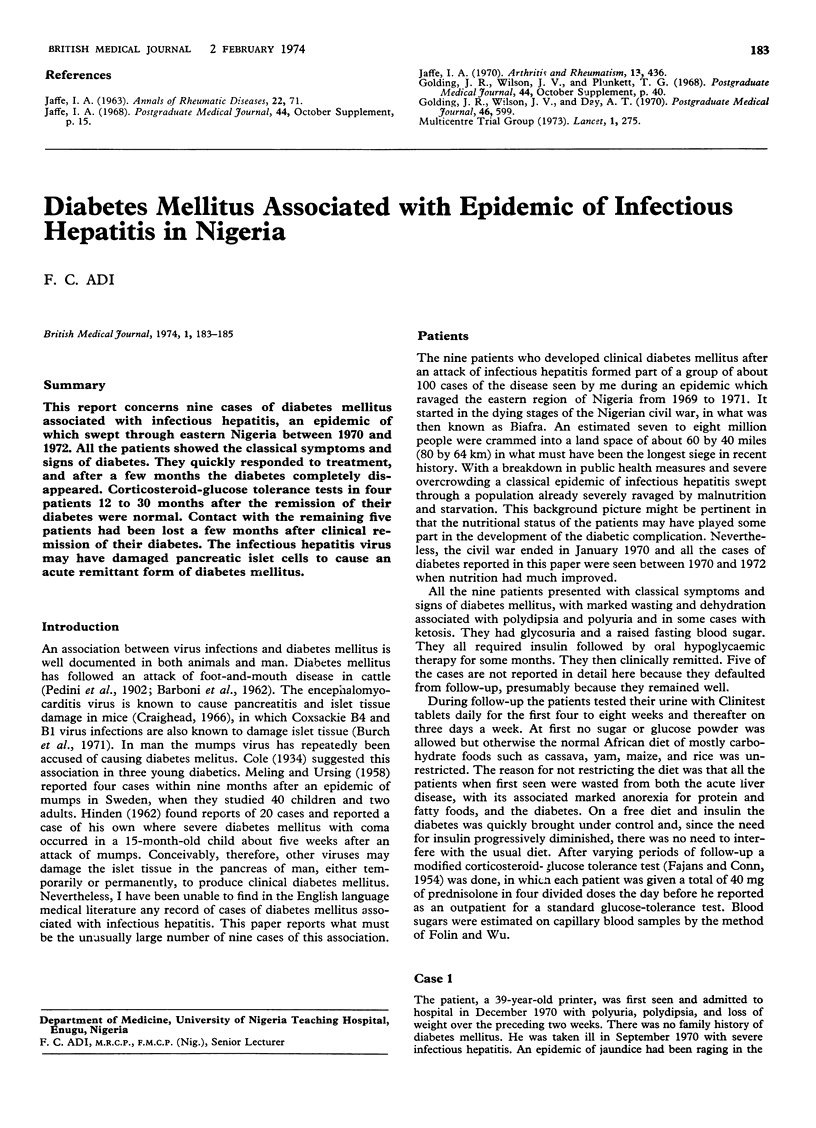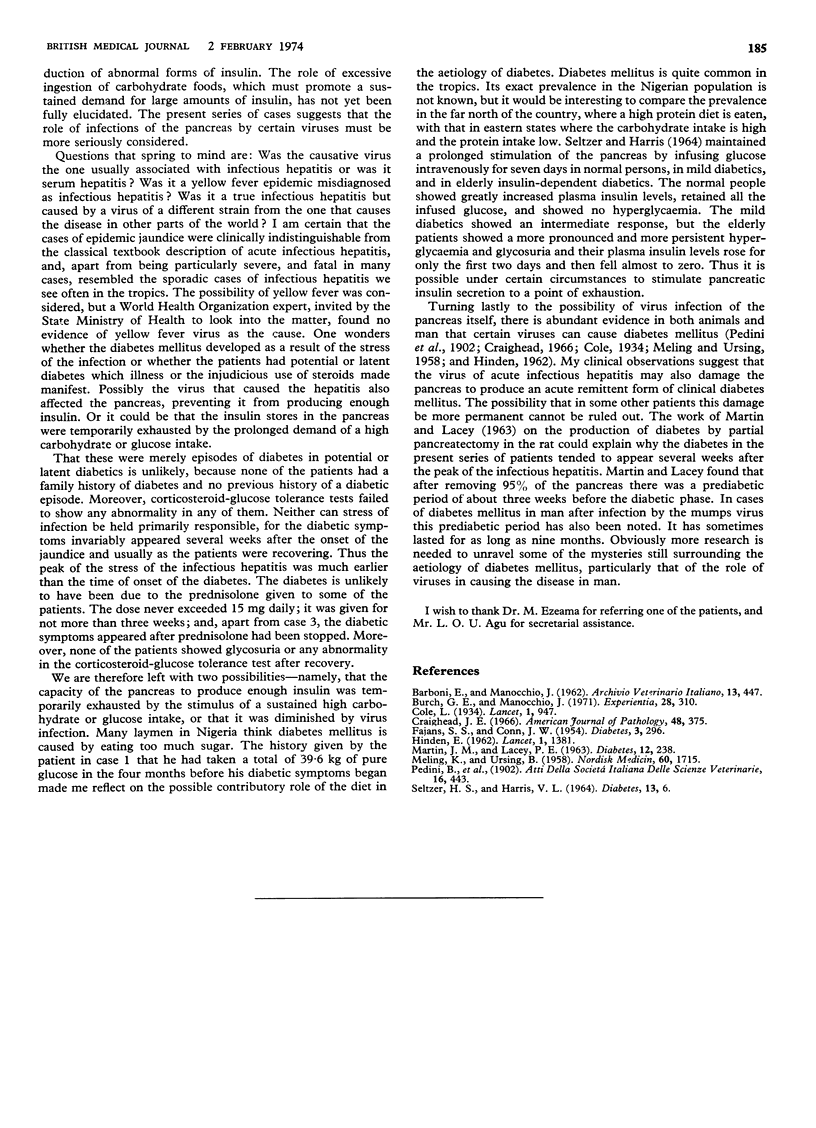Abstract
This report concerns nine cases of diabetes mellitus associated with infectious hepatitis, an epidemic of which swept through eastern Nigeria between 1970 and 1972. All the patients showed the classical symptoms and signs of diabetes. They quickly responded to treatment, and after a few months the diabetes completely disappeared. Corticosteroid-glucose tolerance tests in four patients 12 to 30 months after the remission of their diabetes were normal. Contact with the remaining five patients had been lost a few months after clinical remission of their diabetes. The infectious hepatitis virus may have damaged pancreatic islet cells to cause an acute remittant form of diabetes mellitus.
Full text
PDF


Selected References
These references are in PubMed. This may not be the complete list of references from this article.
- Burch G. E., Tsui C. Y., Harb J. M. Pancreatic islet cell damage in mice produced by coxsackie B 1 and encephalomyocarditis viruses. Experientia. 1972 Mar 15;28(3):310–311. doi: 10.1007/BF01928709. [DOI] [PubMed] [Google Scholar]
- FAJANS S. S., CONN J. W. An approach to the prediction of diabetes mellitus by modification of the glucose tolerance test with cortisone. Diabetes. 1954 Jul-Aug;3(4):296-302; discussion, 302-4. doi: 10.2337/diab.3.4.296. [DOI] [PubMed] [Google Scholar]
- HINDEN E. Mumps followed by diabetes. Lancet. 1962 Jun 30;1(7244):1381–1381. doi: 10.1016/s0140-6736(62)92490-x. [DOI] [PubMed] [Google Scholar]
- MELIN K., URSING B. Diabetes mellitus som komplikation till parotitis epidemica. Nord Med. 1958 Nov 27;60(48):1715–1717. [PubMed] [Google Scholar]
- SELTZER H. S., HARRIS V. L. EXHAUSTION OF INSULOGENIC RESERVE IN MATURITY-ONSET DIABETIC PATIENTS DURING PROLONGED AND CONTINUOUS HYPERGLYCEMIC STRESS. Diabetes. 1964 Jan-Feb;13:6–13. doi: 10.2337/diab.13.1.6. [DOI] [PubMed] [Google Scholar]


